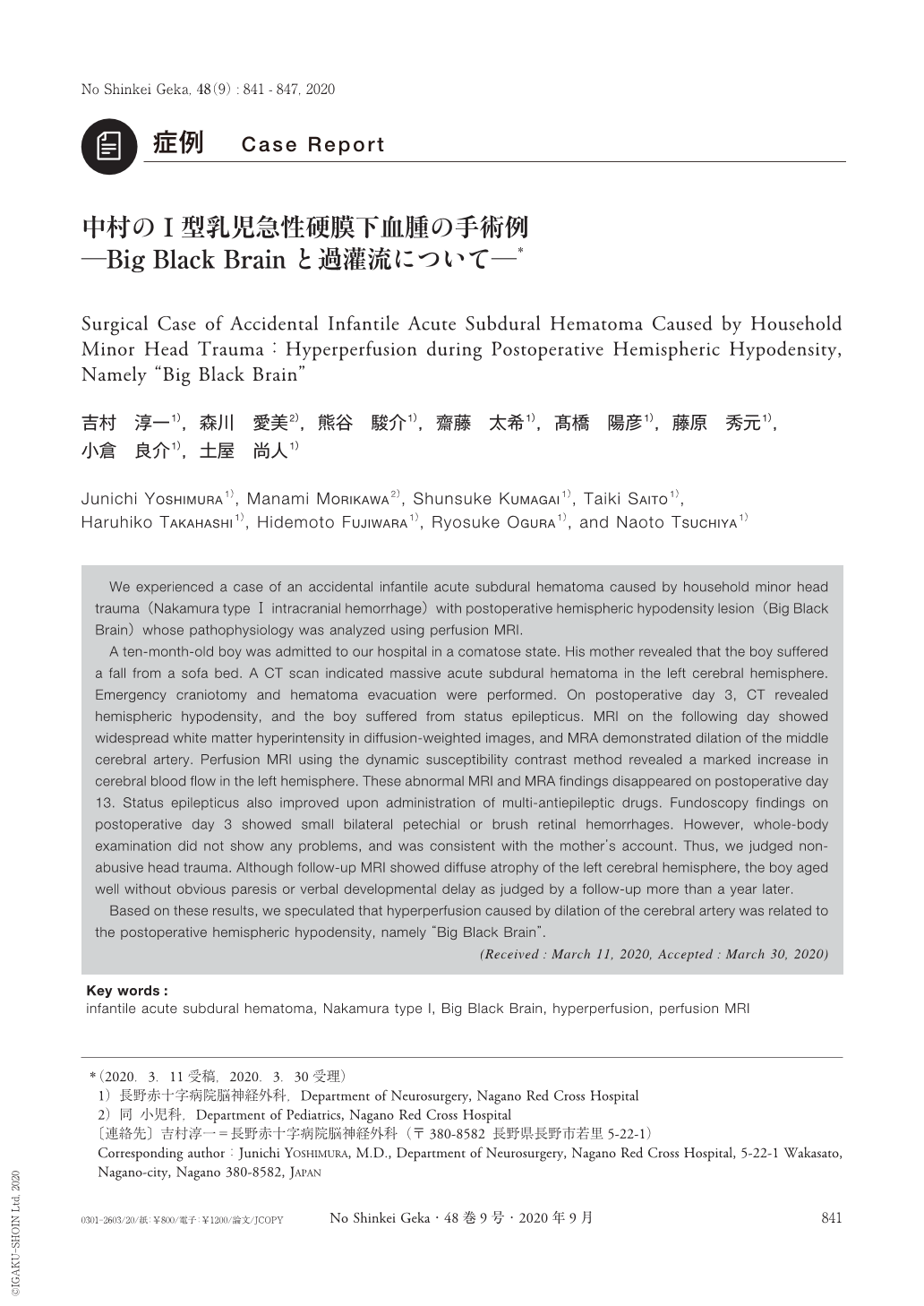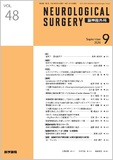Japanese
English
- 有料閲覧
- Abstract 文献概要
- 1ページ目 Look Inside
- 参考文献 Reference
Ⅰ.はじめに
交通事故以外で第三者による目撃のない2歳未満の急性硬膜下血腫は,欧米では虐待と診断される.本邦では従来,家庭内での軽微な頭部外傷によるaccidentalな乳児急性硬膜下血腫の存在が報告されており,中村のⅠ型血腫と呼ばれてきた8).これら虐待や事故により生じた乳児急性硬膜下血腫では,特に重症例において術後数日経過してからCTで大脳半球に広汎なlow density areaを生じる病態があり,Big Black Brainと呼ばれている5).
今回われわれは,中村のⅠ型血腫の術後に生じた,このBig Black Brainと呼ばれるhemispheric hypodensity(HH)の病態解析のためperfusion MRIを施行した1例を経験したので報告する.
We experienced a case of an accidental infantile acute subdural hematoma caused by household minor head trauma(Nakamura type Ⅰ intracranial hemorrhage)with postoperative hemispheric hypodensity lesion(Big Black Brain)whose pathophysiology was analyzed using perfusion MRI.
A ten-month-old boy was admitted to our hospital in a comatose state. His mother revealed that the boy suffered a fall from a sofa bed. A CT scan indicated massive acute subdural hematoma in the left cerebral hemisphere. Emergency craniotomy and hematoma evacuation were performed. On postoperative day 3, CT revealed hemispheric hypodensity, and the boy suffered from status epilepticus. MRI on the following day showed widespread white matter hyperintensity in diffusion-weighted images, and MRA demonstrated dilation of the middle cerebral artery. Perfusion MRI using the dynamic susceptibility contrast method revealed a marked increase in cerebral blood flow in the left hemisphere. These abnormal MRI and MRA findings disappeared on postoperative day 13. Status epilepticus also improved upon administration of multi-antiepileptic drugs. Fundoscopy findings on postoperative day 3 showed small bilateral petechial or brush retinal hemorrhages. However, whole-body examination did not show any problems, and was consistent with the mother's account. Thus, we judged non-abusive head trauma. Although follow-up MRI showed diffuse atrophy of the left cerebral hemisphere, the boy aged well without obvious paresis or verbal developmental delay as judged by a follow-up more than a year later.
Based on these results, we speculated that hyperperfusion caused by dilation of the cerebral artery was related to the postoperative hemispheric hypodensity, namely “Big Black Brain”.

Copyright © 2020, Igaku-Shoin Ltd. All rights reserved.


